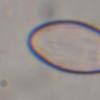
29-12-2014 16:35
Found in soil, 29-12-14, in Eucalyptus sp. and Ole

04-01-2015 18:51
 Alessio Pierotti
Alessio Pierotti
Todfay, I have found Melastiza cornubiensis (Berk

06-12-2014 11:12
 Honza Kalian
Honza Kalian
Hello,I have been struggling to identify this Chei

01-01-2015 19:45
 Alessio Pierotti
Alessio Pierotti
Since for the first time I got lucky ... I will tr

01-01-2015 17:06
 Alessio Pierotti
Alessio Pierotti
Happy new year to all friends of the forumSomeone

03-01-2015 00:22
 Stip Helleman
Stip Helleman
Dear all,does someone have for me this article:Bog

02-01-2015 20:50
Hola a todos: Ascomas emergentes, incrustados en s

28-12-2014 13:04
 Rubén Martínez-Gil
Rubén Martínez-Gil
Hola a todos. Subo unas fotos de un asco que enco
Spores 18-19 x 9-10, asci 182-195 x 10-11,5, hairs 300-320, ectal excipulum cells 26-32 x 26-45.

Zotto
Gilbert
Meilleurs voeux à tous pour 2015 !
Gilbert, I think saw dimly longitudinal lines, not visible.
Has two types of hairs.
Je pense que cette espèce peut correspondre à Tricharina paecox (Karst.) Dennis var. creta (Cke) Yang & Korf (= T. gilva Eckblad) in B.K :90, mais dans le B.K., les ascopores qui sont hors de l'asque ne sont pas bien dessinées, car normalement subfusoïdes). Le caractère subfusoïde des ascospores est typique de la var. cretea. Je dois cependant remarquer que les dimensions qui ont été mesurées sur cette récolte sont un peu supérieures à la norme. Le contenu des ascospores (granulations polaires) est également typique. Je pense que si elles étaient montées dans le BCL, elles présenteraient une réfringence jaunâtre et se collapseraient facilement, ce qui est un caractère générique assez fiable. Elle présentent normalement, si très matures, dans le BCL et à l'immersion, de très fines verrues.
Cette espèce est carbonicole et il me semble voir de petits morceaux de charbon sur la photo. S'il s'agit bien de charbon, cela tendrait encore plus à conclure pour cette espèce.
Peut-être aurons-nous des compléments d'informations.
Cordialement à tous et très bonne année 2015
René
Trichophaea albospadicea (Grev.) Boud. est une espèce douteuse, insuffisamment décrite, dont les caractères connus sont rapprochés, jusqu'à pouvoir presque synonymiser l'espèce avec T. woolhopeia (Cooke & Phill.) Boud.
Voici pour les références de littérature:
BRONCKERS, R.J.C., 2003 - Een sleutel tot de Europese soorten van de genera Trichophaea, Trichophaeopsis en Paratrichophaea. - Starbeeckia 23 : 9-27.
YANG & KORF (1985) A monograph of the genus Tricharina and of a new, segregate genus, Wilcoxina (Pezizales). - Mycotaxon 24: 467-531.
LINDEMANN, U. (2013) Ärger mit Tricharina Eckblad Über eine schwierige Gattung operculater Discomyceten. - Mycol. Bav. 14: 37-51.
Cordialement
René
Gilbert
Cordialement
René


 Trichopharea--0001.pdf
Trichopharea--0001.pdf